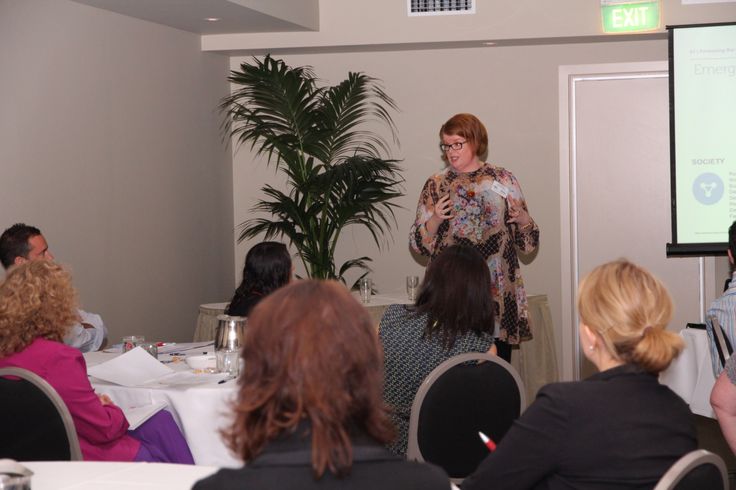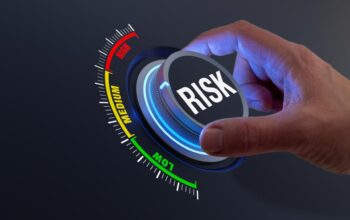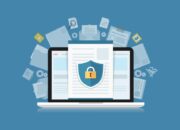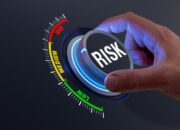In an era defined by rapid change, unprecedented technological advancement, and a globalized economy, the concept of well-being has expanded far beyond mere physical health. It now encompasses a holistic spectrum, including mental, emotional, financial, social, and environmental dimensions. The challenge for individuals and families today is not just to achieve well-being, but to actively future-proof it—to build resilience and implement strategies that safeguard our health, prosperity, and peace of mind against unforeseen disruptions and emerging risks. This article delves deep into the multifaceted approach required to secure your well-being in an unpredictable future, exploring key areas of focus, actionable strategies, the role of technology, and the evolving mindset necessary for sustained thriving.
The Evolving Landscape of Well-being
Historically, well-being was often viewed through a simpler lens, predominantly focusing on physical health and basic material security. However, the complexities of the 21st century have introduced new dimensions and challenges:
A. Increased Life Expectancy: While a triumph, it necessitates long-term planning for health, finances, and purpose in extended retirement. B. Digital Transformation: Offers connectivity and information but also presents risks of digital burnout, misinformation, and privacy concerns. C. Economic Volatility: Global markets, automation, and gig economies create both opportunities and financial insecurities. D. Environmental Shifts: Climate change, resource scarcity, and pollution directly impact physical health and quality of life. E. Social Dynamics: Evolving family structures, community engagement, and the rise of social media reshape our support networks. F. Mental Health Awareness: Greater recognition of mental and emotional health as integral components of overall well-being.
To truly future-proof your well-being, one must adopt a proactive, comprehensive strategy that addresses these interconnected domains.
Pillars of Future-Proofed Well-being
Securing your well-being against future uncertainties requires a deliberate focus on several interconnected pillars. Each pillar contributes to a robust foundation, allowing you to adapt and thrive.
A. Physical Health Resilience
At the core of all well-being is robust physical health. Future-proofing this pillar involves proactive measures, rather than reactive responses to illness.
- Preventive Care and Proactive Health Management:
- Regular Check-ups: Consistent medical, dental, and eye examinations are crucial for early detection and intervention.
- Screenings: Age-appropriate screenings (e.g., for cancer, diabetes, heart disease) can identify risks before they become critical.
- Immunizations: Staying up-to-date with vaccinations protects against preventable diseases, including emerging threats.
- Personalized Health Plans: Working with healthcare providers to develop tailored plans based on individual genetics, lifestyle, and risk factors.
- Wearable Tech and Health Monitoring: Utilizing smartwatches, fitness trackers, and other devices to monitor vital signs, activity levels, and sleep patterns, providing data for informed health decisions.
- Nutrition for Longevity and Vitality:
- Balanced Diet: Emphasizing whole foods, lean proteins, healthy fats, and a rich variety of fruits and vegetables.
- Gut Health: Recognizing the profound link between gut microbiome and overall health, including mental well-being and immunity. Incorporating probiotics and prebiotics.
- Sustainable Eating Habits: Adopting dietary patterns that are both good for personal health and environmentally sustainable, like plant-forward diets.
- Active Lifestyle and Movement:
- Consistent Physical Activity: Aiming for a mix of cardiovascular exercise, strength training, flexibility, and balance activities.
- Movement Integration: Incorporating movement into daily routines to combat sedentary lifestyles, such as taking stairs, walking meetings, or standing desks.
- Adaptive Fitness: Developing a fitness routine that can be adapted as physical capabilities change with age or circumstance.
- Quality Sleep and Rest:
- Sleep Hygiene: Prioritizing consistent sleep schedules, creating a conducive sleep environment, and avoiding screens before bedtime.
- Understanding Sleep Cycles: Recognizing the importance of deep and REM sleep for physical and mental restoration.
- Managing Sleep Disorders: Addressing issues like insomnia or sleep apnea with professional guidance.
- Environmental Health Awareness:
- Clean Air and Water: Being mindful of the quality of air we breathe and water we drink, both indoors and outdoors.
- Exposure to Toxins: Minimizing exposure to environmental pollutants and harmful chemicals in food, products, and living spaces.
- Nature Connection: Recognizing the positive impact of spending time in green spaces on physical and mental health.
B. Mental and Emotional Fortitude
Building mental and emotional resilience is paramount for navigating stress, change, and adversity.
- Stress Management Techniques:
- Mindfulness and Meditation: Practices that cultivate present-moment awareness, reducing anxiety and improving emotional regulation.
- Breathing Exercises: Simple yet powerful techniques to calm the nervous system and reduce stress responses.
- Time Management and Prioritization: Structuring commitments to reduce overwhelm and maintain a sense of control.
- Emotional Intelligence Development:
- Self-Awareness: Understanding one’s own emotions, strengths, and weaknesses.
- Self-Regulation: Managing emotional reactions and impulses constructively.
- Empathy: The ability to understand and share the feelings of others.
- Social Skills: Effectively navigating social interactions and building healthy relationships.
- Cultivating a Growth Mindset:
- Embracing Challenges: Viewing obstacles as opportunities for learning and development, rather than insurmountable barriers.
- Resilience Building: Developing the capacity to bounce back from setbacks and adversity.
- Lifelong Learning: Continuously seeking new knowledge and skills, keeping the mind agile and adaptable.
- Seeking Professional Support:
- Therapy and Counseling: Recognizing when professional help is needed for mental health challenges.
- Coaching: Engaging with coaches for personal development, career guidance, or specific skill enhancement.
- Digital Mental Health Tools: Utilizing reputable apps and online platforms for self-help, mood tracking, or virtual therapy sessions.
- Fostering Purpose and Meaning:
- Identifying Values: Understanding what truly matters to you and aligning your actions with those values.
- Engaging in Meaningful Work: Finding purpose not just in a career, but also in hobbies, volunteering, or creative pursuits.
- Contribution: Giving back to the community or causes you care about, which often provides a sense of fulfillment.
C. Financial Security and Stability
A stable financial foundation is critical for reducing stress and enabling choices that support overall well-being.
- Emergency Savings Fund:
- Building a Safety Net: Aiming for 3-6 months (or more) of living expenses in an easily accessible, liquid account. This is the first line of defense against job loss, medical emergencies, or unforeseen expenses.
- Automated Savings: Setting up automatic transfers to ensure consistent contributions.
- Debt Management and Reduction:
- High-Interest Debt Prioritization: Aggressively paying down credit card debt, personal loans, and other high-interest obligations.
- Strategic Debt Repayment: Utilizing methods like the “debt snowball” or “debt avalanche” to gain momentum.
- Avoiding Unnecessary Debt: Being mindful of taking on new debt that doesn’t contribute to long-term wealth or essential needs.
- Diversified Investments for Long-Term Growth:
- Retirement Planning: Contributing consistently to retirement accounts (e.g., 401(k), IRA) as early as possible to leverage compound interest.
- Diversification: Spreading investments across different asset classes (stocks, bonds, real estate, commodities) to mitigate risk.
- Understanding Risk Tolerance: Aligning investment strategies with personal risk appetite and financial goals.
- Comprehensive Insurance Coverage:
- Health Insurance: Essential for managing medical costs and accessing necessary care.
- Life Insurance: Provides financial protection for dependents in case of unexpected death.
- Disability Insurance: Replaces a portion of income if you’re unable to work due to illness or injury.
- Home/Renters Insurance: Protects your assets and provides liability coverage.
- Auto Insurance: Mandatory for vehicle owners, protecting against damage and liability.
- Long-Term Care Insurance: Increasingly important for covering potential costs of extended care in later life.
- Income Diversification and Skill Development:
- Multiple Income Streams: Exploring side hustles, freelance work, or passive income opportunities to reduce reliance on a single source.
- Continuous Skill Upgrading: Investing in education and training to remain competitive and adaptable in the job market, preventing career obsolescence.
- Networking: Building professional connections that can lead to new opportunities and insights.
- Estate Planning:
- Wills and Trusts: Ensuring your assets are distributed according to your wishes.
- Power of Attorney: Designating individuals to make financial and medical decisions on your behalf if you become incapacitated.
- Beneficiary Designations: Updating beneficiaries on all accounts (retirement, insurance).
D. Social Connection and Community Engagement
Strong social ties are a powerful predictor of well-being and longevity.
- Nurturing Relationships:
- Family and Friends: Actively investing time and effort in close relationships.
- Meaningful Connections: Prioritizing quality over quantity in social interactions.
- Effective Communication: Practicing active listening and honest expression in relationships.
- Building a Support Network:
- Diverse Relationships: Having a mix of friends, mentors, colleagues, and community members.
- Seeking and Offering Help: Being willing to ask for support when needed and providing it to others.
- Community Involvement:
- Volunteering: Contributing to causes you care about, fostering a sense of purpose and connection.
- Civic Engagement: Participating in local groups, clubs, or political processes to shape your environment.
- Local Business Support: Patronizing local businesses strengthens community bonds.
- Digital Social Wellness:
- Mindful Social Media Use: Leveraging platforms for genuine connection and positive engagement, avoiding excessive comparisons or doomscrolling.
- Digital Detox: Regularly disconnecting from screens to engage with the real world.
- Online Communities: Finding supportive online groups centered around shared interests, but balancing with in-person interactions.
E. Environmental Stewardship and Preparedness
Our well-being is intrinsically linked to the health of the planet and our immediate surroundings.
- Sustainable Living Practices:
- Resource Conservation: Reducing energy and water consumption at home.
- Waste Reduction: Practicing the “reduce, reuse, recycle” hierarchy.
- Eco-Friendly Choices: Opting for sustainable products, transportation, and consumption patterns.
- Supporting Green Initiatives: Advocating for environmental protection and sustainable policies.
- Disaster Preparedness:
- Emergency Kits: Assembling supplies for natural disasters (food, water, first aid, essential documents).
- Family Emergency Plan: Establishing communication strategies and meeting points.
- Home Safety Measures: Installing smoke detectors, carbon monoxide detectors, and understanding evacuation routes.
- Insurance Review: Ensuring adequate home and auto insurance coverage for natural disaster risks specific to your region.
- Local Environment Enhancement:
- Gardening/Green Spaces: Cultivating personal gardens or supporting community greening efforts.
- Local Cleanup Initiatives: Participating in efforts to keep your neighborhood clean and healthy.
- Safe Living Environment: Addressing home hazards like lead paint, asbestos, or poor air quality.
The Role of Technology in Future-Proofing Well-being
Technology, when leveraged wisely, can be a powerful ally in securing your well-being.
A. Digital Health and Wellness Platforms
- Telemedicine: Provides convenient access to healthcare professionals, especially in remote areas or for routine consultations.
- Mental Wellness Apps: Offer guided meditations, cognitive behavioral therapy (CBT) exercises, mood tracking, and stress reduction tools.
- Fitness and Nutrition Apps: Track progress, provide workout routines, log food intake, and offer personalized health insights.
- Genomic Testing: While still evolving, direct-to-consumer genetic tests offer insights into predispositions for certain health conditions, allowing for proactive lifestyle adjustments (with professional guidance).
B. Financial Technology (FinTech) Tools
- Budgeting Apps: Help track spending, set financial goals, and visualize cash flow.
- Investment Platforms: Offer accessible ways to invest in stocks, bonds, and mutual funds, often with automated features.
- Robo-Advisors: Provide automated, algorithm-driven financial planning and investment management at lower costs.
- Digital Wallets and Payment Systems: Streamline transactions and improve financial management.
C. Smart Home and Safety Devices
- Security Systems: Smart locks, cameras, and alarm systems enhance home safety.
- Environmental Sensors: Devices that monitor air quality, radon levels, or water leaks, alerting you to potential hazards.
- Automated Systems: Smart lighting, thermostats, and appliances can optimize energy consumption and improve comfort.
D. Educational and Skill-Building Platforms
- Online Courses (MOOCs): Platforms like Coursera, edX, and Udemy offer access to vast knowledge, enabling continuous learning and skill development for career resilience.
- Professional Networking Platforms: LinkedIn and specialized communities facilitate connections and career opportunities.
- Language Learning Apps: Broaden horizons and enhance cognitive agility.
E. AI and Predictive Analytics
While nascent, AI has the potential to personalize well-being strategies:
- Personalized Health Recommendations: AI analyzing health data to suggest tailored diets, exercise routines, or early detection screenings.
- Financial Forecasting: AI models predicting future financial scenarios based on spending habits and market trends.
- Early Warning Systems: AI identifying patterns in data that might signal emerging risks to mental or physical health.
The Mindset for Enduring Well-being
Beyond specific actions and tools, cultivating a particular mindset is crucial for future-proofing your well-being.
A. Adaptability and Flexibility
The future is inherently uncertain. A rigid mindset will struggle; an adaptable one embraces change as an opportunity. This means being open to new ideas, adjusting plans when circumstances shift, and learning from failures.
B. Proactive vs. Reactive Approach
Future-proofing is fundamentally proactive. It’s about anticipating potential challenges and taking steps to mitigate them before they become crises. This contrasts sharply with a reactive approach, which only addresses problems after they’ve occurred.
C. Long-Term Perspective
Decisions made today have ripple effects years or even decades down the line. A long-term perspective encourages consistent effort in saving, health maintenance, and relationship building, even when immediate gratification is tempting.
D. Continuous Learning and Self-Improvement
The world is constantly evolving. A commitment to lifelong learning, whether formal or informal, keeps your skills relevant, your mind sharp, and your perspective fresh. This includes learning from mistakes and seeking feedback.
E. Gratitude and Positive Outlook
While not ignoring challenges, cultivating gratitude and a positive outlook can significantly impact mental and emotional well-being. It helps build resilience, fosters optimism, and strengthens coping mechanisms during difficult times.
F. Self-Compassion and Self-Care
Future-proofing doesn’t mean relentlessly pushing yourself. It means recognizing your limits, practicing self-compassion, and integrating regular self-care activities into your routine to prevent burnout and maintain energy levels.
Building Your Future-Proof Well-being Plan: Actionable Steps
Translating these pillars and mindsets into a tangible plan involves several practical steps.
A. Conduct a Well-being Audit: Honestly assess your current state across all pillars (physical, mental, financial, social, environmental). Identify areas of strength and areas needing improvement. B. Set SMART Goals: For each area, define Specific, Measurable, Achievable, Relevant, and Time-bound goals. For example: “Increase emergency savings by $500 per month for the next 12 months.” C. Prioritize and Start Small: Don’t try to change everything at once. Pick 1-2 key areas to focus on initially, and break down large goals into small, manageable steps. Consistency is more important than intensity. D. Automate Where Possible: Automate savings transfers, bill payments, and even recurring calendar reminders for health check-ups or exercise. E. Build a Support System: Share your goals with trusted friends, family, or mentors who can offer encouragement and accountability. F. Regularly Review and Adjust: Life changes, and so should your plan. Schedule quarterly or annual reviews to assess progress, adapt to new circumstances, and refine your strategies. G. Invest in Yourself: Consider spending on education, quality food, ergonomic equipment, or professional guidance if it contributes to long-term well-being. View these as investments, not just expenses. H. Practice Digital Hygiene: Set boundaries for screen time, curate your online feeds for positive content, and protect your personal data. I. Embrace Experimentation: Don’t be afraid to try new approaches to health, finance, or personal development. What works for one person may not work for another. Learn from what resonates with you.
Conclusion
Future-proofing your well-being is not a destination but a continuous journey of proactive adaptation, strategic planning, and mindful living. In a world characterized by accelerating change, the ability to safeguard your physical health, mental fortitude, financial security, robust social connections, and environmental consciousness is no longer a luxury but an absolute necessity.
By understanding the interconnectedness of these well-being pillars, leveraging technology wisely, and cultivating a resilient, adaptable mindset, you empower yourself to navigate uncertainty with greater confidence and grace. It’s an investment in yourself, your loved ones, and your capacity to thrive amidst any challenge. Begin today, take small consistent steps, and build a future where your well-being remains strong, vibrant, and ready for whatever comes next. The power to shape a secure and flourishing future lies firmly within your grasp.









